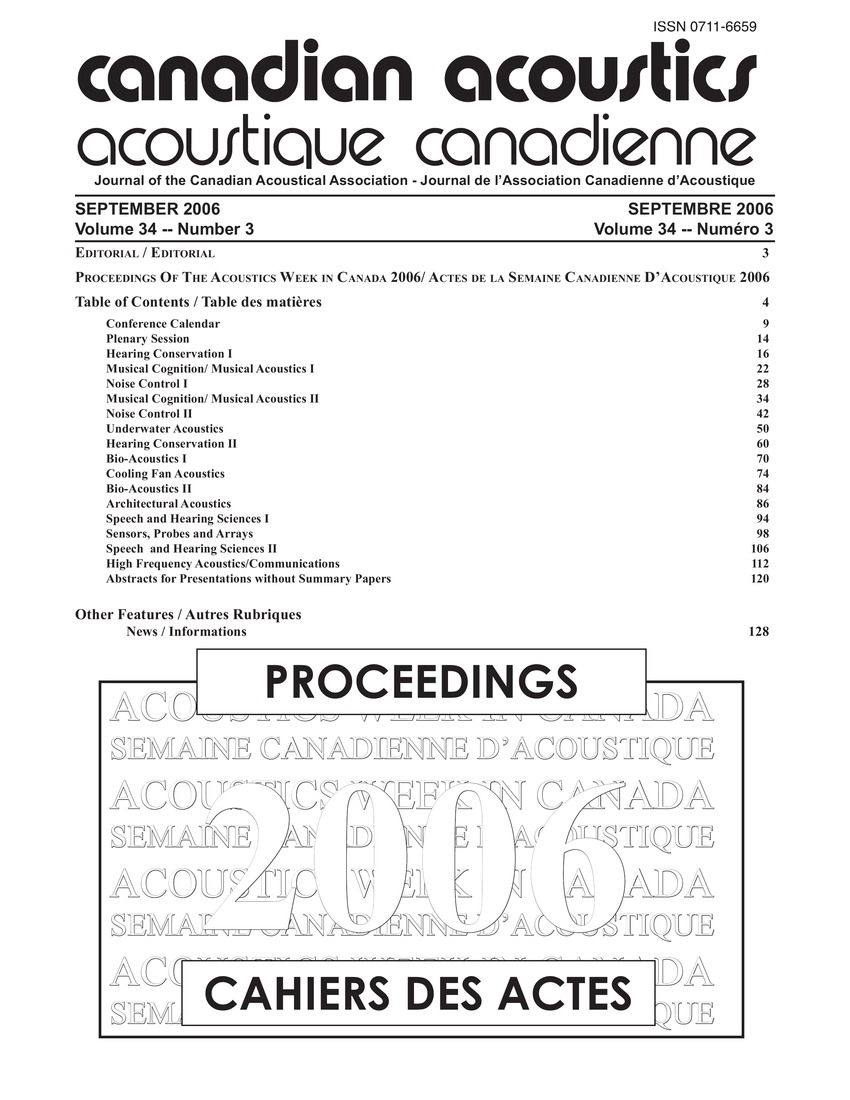Hearing and cognitive performance in low-frequency noise
Keywords:
Acoustic noise, Cognitive systems, Military vehicles, Signal detection, Speech intelligibility, Speech processing, Auditory detection, Low-frequency noise, Octave band frequenciesAbstract
The auditory detection, speech intelligibility and cognition performance in armored vehicle low-frequency noise, was investigated. 36 human subjects aged 18 to 55 with hearing thresholds no greater than 25 dB HLat 0.5 kHz, 1 kHz, 2 kHz and 4 kHz were subjected to battery of tests, under pink noise, and recorded LAV III noise (light-armored vehicles) under unoccluded, wearing a passive earmuff and an active earmuff listening conditions. Auditory detection was measured using a variation of Bekesy tracking at six third octave band frequencies from 0.5 kHz to 8 kHz and speech understanding was evaluated using the Modified Rhyme Test (MRT). The cognitive test battery consisted of two subjective questionnaires relating to mood, motivation and fatigue. It was observed that mean unoccluded thresholds in quiet were less than 20 dB while it increased to 36 dB when muff was worn. result shows that use of the ear muff in pink or vehicle noise don't affect signal detection at any frequency.Additional Files
Published
How to Cite
Issue
Section
License
Author Licensing Addendum
This Licensing Addendum ("Addendum") is entered into between the undersigned Author(s) and Canadian Acoustics journal published by the Canadian Acoustical Association (hereinafter referred to as the "Publisher"). The Author(s) and the Publisher agree as follows:
-
Retained Rights: The Author(s) retain(s) the following rights:
- The right to reproduce, distribute, and publicly display the Work on the Author's personal website or the website of the Author's institution.
- The right to use the Work in the Author's teaching activities and presentations.
- The right to include the Work in a compilation for the Author's personal use, not for sale.
-
Grant of License: The Author(s) grant(s) to the Publisher a worldwide exclusive license to publish, reproduce, distribute, and display the Work in Canadian Acoustics and any other formats and media deemed appropriate by the Publisher.
-
Attribution: The Publisher agrees to include proper attribution to the Author(s) in all publications and reproductions of the Work.
-
No Conflict: This Addendum is intended to be in harmony with, and not in conflict with, the terms and conditions of the original agreement entered into between the Author(s) and the Publisher.
-
Copyright Clause: Copyright on articles is held by the Author(s). The corresponding Author has the right to grant on behalf of all Authors and does grant on behalf of all Authors, a worldwide exclusive license to the Publisher and its licensees in perpetuity, in all forms, formats, and media (whether known now or created in the future), including but not limited to the rights to publish, reproduce, distribute, display, store, translate, create adaptations, reprints, include within collections, and create summaries, extracts, and/or abstracts of the Contribution.


